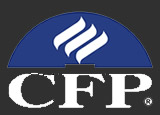July 1, 2022
The first six months of 2022 saw the S&P 500 decline 23.6% from its all-time high at 4,796.56 on January 3 to a closing low (so far) of 3,666.77 on June 16. The S&P “officially” hit bear market territory around June 13, when it ended the day 22% below that record high on January 3.[i] The Index finished its worst first half since 1970 at 3,785.38.
More noteworthy even than the extent of the decline was its gathering violence: in mid-June, when we stumbled into bear territory, the market ran off a streak of five out of seven trading days on which 90% of S&P 500 stocks closed lower. That’s a bad run, to say the least.
Now, let’s stop right there. Regardless of any other points, I’ll make in this newsletter, the most urgent should already be clear. Simply put, the best way to destroy any chance for lifetime investment success has historically been to sell one’s quality portfolios into a bear market. But to sell when investor sentiment is sufficiently negative to drive 90% of S&P companies lower on five out of seven trading days—that is, to sell when everyone else is selling—must strike us as the height of long-term folly.
I know we have talked about this before, but this kind of information is like Vitamin C—the body can’t store it, so we need to keep refreshing our supply. Let’s quickly go over the last few years of market history.
In our circles, March 9, 2009, is called “The Great Panic” caused by the last financial apocalypse. On that day, the S&P closed at 676.53.[ii] From that panic-driven trough, the S&P 500 (with dividends reinvested) compounded at 17.6% annually for the next twelve years through the end of 2021. At its peak this past January 3, the Index was up seven times its low. This was one of the greatest runs in the whole history of American equities. You may ask what has changed since January 3? In a word, it’s inflation.
According to Milton Freidman, inflation is always and everywhere a monetary phenomenon. We simply have too much money chasing too few goods. When we can bring supply and demand back into balance, we will have slowed inflation. Anecdotally, I think we’re starting a see some evidence of that happening, but we need to see it for about three or four months in a row across all asset classes.
Now, on to this bear market. Just to refresh our memories, remember, a bull attacks by thrusting its horns upward, and bears attack by pulling their prey downward. Bulls markets are up; bears are down. That’s all this bear/bull livestock fixation means. It’s merely shorthand for the pundits—it is not an official economic designation. Still, we measure the heck out of them. Bull markets last an average of 991 days (2.7 years), while bear markets average just 289 days (9.6 months.) Since WWII, there have been 14 bear markets or about every 5.4 years.[iii]
Believe it or not, bear markets (and recessions) make for a more efficient economy. When there is too much capital (cash), businesses and people tend to use it inefficiently. Economists call this a misallocation of capital. (It’s like the wealth effect in personal finance—inevitably, if people feel wealthy, they end up buying things they don’t need—i.e., they waste money—often on boats!)
Ideally, businesses (and individuals) will use capital to increase or maintain productivity—managerial strategies to optimize capital are as complex as they are varied. Let’s say, like me, you work at a computer terminal. Adding another monitor might increase my productivity since I could simultaneously watch my numbers and answer emails. If two screens are helpful, how about another one—let’s run three at a time. If three are good, four must be 25% better, right? Wrong! Who the heck can look at four monitors? Just because I can doesn’t mean I should. Ultimately, I would have spent a valuable resource on something that provides marginal improvement or, more likely, lessened productivity. (No doubt, that fourth monitor would have been tuned to boats on Youtube.)
When whole economies become inefficient, competition steps in and eats their lunch. Did you know that General Motors was the world’s largest automaker for 77 years (1931-2008)? And then, it filed for bankruptcy in 2009 with over $100 billion in debt it could not pay. To say they misallocated capital would be an understatement. Misallocation of capital happens to countries, states, counties, cities, businesses, and people. An occasional bear market or a recession compels entities and decision-makers to reel in excesses. If they don’t, they perish, and a more efficient and effective organization takes over.
Speaking of excesses—I will be on vacation for the first two weeks in July. (I plan to take advantage of the favorable USD-to-Euro exchange rate.) I will answer emails when I can (because I’m addicted to my phone), but if you need something in an emergency, Jenna will be in the office, and Kristen Owen at the bank can make any trades you might need.
Lastly, Kristen sent us her newsletter a couple of weeks ago. She is a fantastic (and brief) writer. I have added a copy of her newsletter to the end of this one, so you get another perspective.
Thanks again for reading. Please call us if you want to meet and go over your accounts, plans, and thoughts about money—or just to shoot the bull. MK
[i] https://www.wsj.com/articles/bear-market-explained-11652973167
[ii] https://www.wsj.com/market-data/quotes/index/SPX/historical-prices
[iii] https://www.hartfordfunds.com/practice-management/client-conversations/managing-volatility/bear-markets.html
Here’s Kristen’s June newsletter to her clients:
Whenever I fret about not having something new or interesting to write about, I remember that this business is cyclical, and fairly often it’s relevant to repeat myself.
We can’t predict the future or time the markets. Stock market declines, while sometimes significant, have historically been temporary.
I shared this graph with you in February, and since then, the YTD data has only gotten worse. However, I think the image and the message it delivers is valuable: despite average intra-year drops of 14.0%, annual returns have been positive in 32 of the last 42 years.
|


